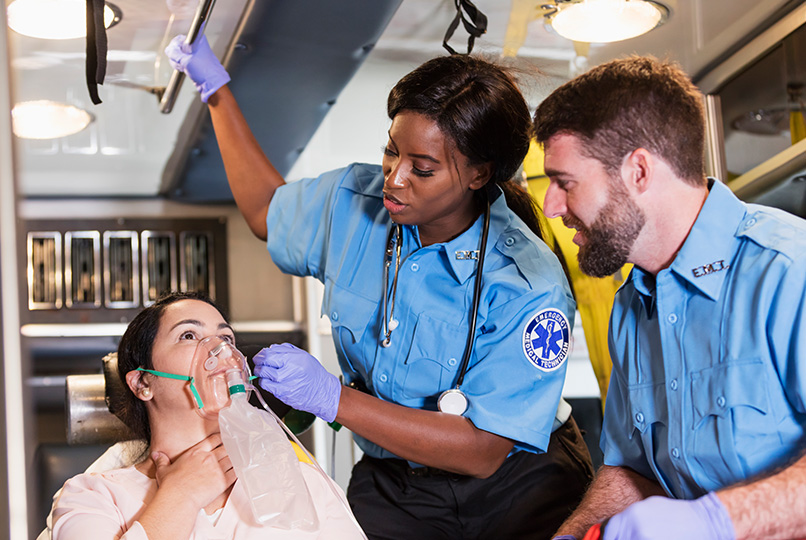
Emergency Medical Technician (EMT)
The role of Emergency Medical Technicians (EMT) is critical in the health care system to deliver immediate health care in case of emergency while at home or in transport to the nearest hospital. They are educated in emergency, trauma and illness assessment to help expedite treatment for patients. EMTs provide basic emergency medical care and can give CPR, control bleeding and stabilize patients to prepare them for transport. Along with assessing and caring for patients, EMTs frequently transport patients from one medical center to another, which may include a hospital or nursing home. With their crucial knowledge and ability to make swift decisions, EMTs play a crucial role in responding to emergencies and providing lifesaving interventions in urgent situations.
Length of Study
Career Level
Delivery Type
Duties
- Demonstrated knowledge of basic patient care skills, various medical procedures, views, and equipment.
- Ability to recognize an emergency and take appropriate action.
- Ability to interpret various data and instructions furnished in written, oral, diagram, or schedule form.
- Basic understanding of human anatomy, physiology, pathology, and medical terminology.
- Possess written and verbal communication skills to explain sensitive information clearly and professionally to diverse audiences, including non-medical people.
- Well-developed time management and organizational skills, including the ability to prioritize assignments and work within standardized operating procedures and scientific methods to achieve objectives and meet deadlines.
Career Opportunities
Day in the Life
Job Outlook
Emergency Medical Technicians make a median salary of $45,110. California’s outlook for the Emergency Medical Technician is a 15% growth between 2021-2031.
